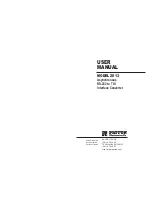
1-71
1
1
<Type E1>
The liquid tubing side is connected by a flare nut, and the gas tubing side is connected by brazing.
1. Connecting the Refrigerant Tubing
Use of the Flaring Method
Many of conventional split system air conditioners employ the flaring method to connect refrigerant tubes that run
between indoor and outdoor units.
In this method, the copper tubes are flared at each end and connected with flare nuts.
Flaring Procedure with a Flare Tool
(1)
Cut the copper tube to the required length with a tube
cutter. It is recommended to cut approx. 30 – 50 cm longer
than the tubing length you estimate.
(2)
Remove burrs at each end of the copper tubing with a
tube reamer or file. This process is important and should
be done carefully to make a good flare. Be sure to keep
any contaminants (moisture, dirt, metal filings, etc.) from
entering the tubing. (Figs. 1- 50 and 1- 51)
When reaming, hold the tube end downward and be sure that
no copper scraps fall into the tube. (Fig. 1- 51)
(3) Remove the flare nut from the unit and be sure to mount it
on the copper tube.
After
Before
Deburring
Copper
tubing
Reamer
Fig. 1- 50
Fig. 1- 51
Fig. 1- 52
NOTE
NOTE
(4) Make a flare at the end of the copper tube with a flare tool.
(Fig. 1- 52)
A good flare should have the following characteristics:
inside surface is glossy and smooth
edge is smooth
tapered sides are of uniform length
Flare size: A (mm)
A
Copper tubing
(Outer dia.)
A
0
–
0.4
ø6.35
ø9.52
ø12.7
ø15.88
ø19.05
9.1
13.2
16.6
19.7
24.0
Flare nut
Copper
tubing
Flare tool
3. Insulating the Refrigerant Tubing
Tubing Insulation
Thermal insulation must be applied to all units tubing,
including distribution joint (field supply).
* For gas tubing, the insulation material must be heat
resistant to 120°C or above.
For other tubing, it must be resistant to 120°C or above.
For other tubing, it must be heat resistant to 80°C or above.
Insulation material thickness must be 10 mm or greater.
If the conditions inside the ceiling exceed DB 30°C and
RH 70%, increase the thickness of the gas tubing
insulation material by 1 step.
Two tubes arranged together
Liquid tubing
Gas tubing
Insulation
Fig. 1- 46
If the exterior of the outdoor unit valves has been
finished with a square duct covering, make sure you
allow sufficient space to access the valves and to
allow the panels to be attached and removed.
Taping the flare nuts
Wind the white insulation tape around the flare nuts at the gas tube connections.
Then cover up the tubing connections with the flare insulator, and fill the gap at the
union with the supplied black insulation tape.
Finally, fasten the insulator at both ends with the supplied vinyl clamps. (Fig. 1- 47)
WARNING
WARNING
Flare insulator (supplied)
Insulation tape
(white)(supplied)
Tube insulator
(not supplied)
Heat resistant
120°C or above
Flare union
Flare nut
Unit side
Fig. 1- 47
Insulation material
The material used for insulation must have good insulation characteristics, be easy to use, be age resistant,
and must not easily absorb moisture.
After a tube has been insulated, never try to bend it into a narrow curve because
it can cause the tube to break or crack.
Never grasp the drain or refrigerant connecting outlets when moving the unit.
4. Taping the Tubes
(1) At this time, the refrigerant tubes (and electrical wiring
if local codes permit) should be taped together with
armoring tape in 1 bundle. To prevent condensation
from overflowing the drain pan, keep the drain hose
separate from the refrigerant tubing.
(2) Wrap the armoring tape from the bottom of the outdoor
unit to the top of the tubing where it enters the wall.
As you wrap the tubing, overlap half of each previous
tape turn.
(3) Clamp the tubing bundle to the wall, using 1 clamp
approx. each meter. (Fig. 1- 48)
Insulated tubes
Drain hose
Clamp
Fig. 1- 48
NOTE
Do not wind the armoring tape too tightly since this will
decrease the heat insulation effect.
Also ensure that the condensation drain hose splits away
from the bundle and drips clear of the unit and the tubing.
5. Finishing the Installation
After finishing insulating and taping over the tubing, use sealing putty to seal
off the hole in the wall to prevent rain and draft from entering. (Fig. 1- 49)
Apply putty here
Tubing
Fig. 1- 49
Sec1.indd 71
2014/11/07 10:28:09
Summary of Contents for S-200PE1E8
Page 88: ...1 82 MEMO ...
Page 112: ...3 2 3 3 1 Outdoor Units Electric Wiring Diagram U 200PE1E8 U 250PE1E8 ...
Page 113: ...3 3 3 Schematic Diagram U 200PE1E8 U 250PE1E8 ...
Page 115: ...3 5 3 3 2 Indoor Units High Static Pressure Ducted Type S 200PE1E8A Electric Wiring Diagram ...
Page 116: ...3 6 3 3 2 Indoor Units High Static Pressure Ducted Type S 200PE1E8A Schematic Diagram ...
Page 117: ...3 7 3 3 2 Indoor Units High Static Pressure Ducted Type S 200PE1E8 Electric Wiring Diagram ...
Page 118: ...3 8 3 3 2 Indoor Units High Static Pressure Ducted Type S 200PE1E8 Schematic Diagram ...
Page 119: ...3 9 3 3 2 Indoor Units High Static Pressure Ducted Type S 250PE1E8 Electric Wiring Diagram ...
Page 120: ...3 10 3 3 2 Indoor Units High Static Pressure Ducted Type S 250PE1E8 Schematic Diagram ...
Page 129: ...4 9 4 4 3 Outdoor Unit Filter PCB FIL C906VH8 ...
Page 130: ...4 10 4 4 4 Outdoor Unit HIC Board HIC C906VH8 ...
Page 136: ... MEMO 4 16 ...
Page 154: ... MEMO 5 18 ...
Page 164: ... MEMO 6 10 ...
Page 180: ... MEMO 7 16 ...
Page 197: ...201411 ...
















































